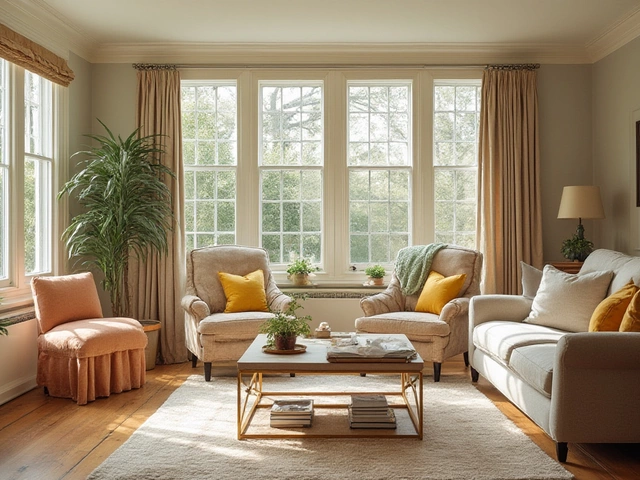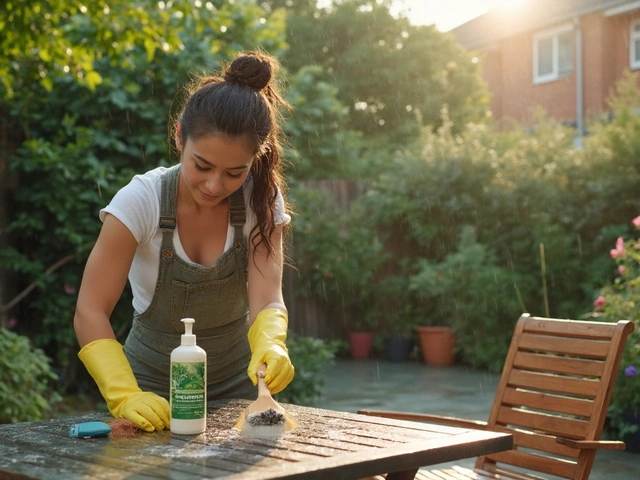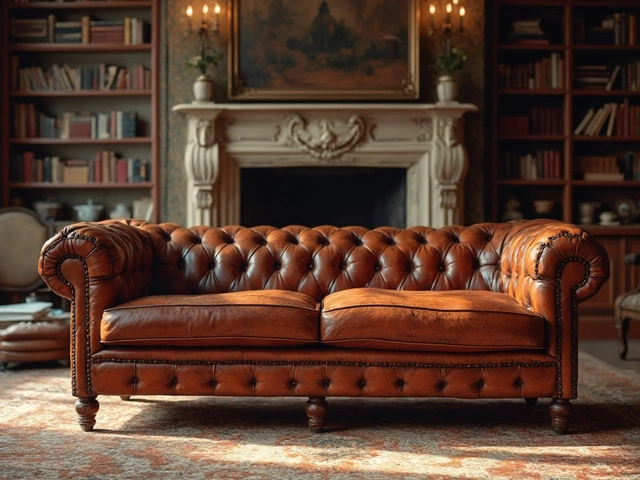 23
Nov,2025
23
Nov,2025
Sofa Dirt-Hiding Calculator
Answer Your Household Questions
Your Recommendation
If you’ve ever sat on a light-colored sofa only to realize a week later that it looks like a map of the world’s busiest highways, you know the struggle. Dirt doesn’t just show up-it multiplies. Pet hair, crumbs, muddy shoes, kid fingerprints, spilled coffee. It all sticks. And the lighter the sofa, the more it screams for attention. So what color sofa hides dirt? The answer isn’t just about shade-it’s about fabric, texture, and how your life actually moves through your living room.
Dark Colors Are the Silent Heroes
Black, charcoal, navy, and deep brown are the undisputed champions when it comes to hiding dirt. These colors don’t just mask stains-they make them vanish. A speck of dog hair? Gone against charcoal. A splash of red wine? Blends into midnight blue. A trail of dirt from boots? Just another shadow on a dark sofa.
Real-world proof? In Melbourne, where rain and mud are practically part of the weather, dark-colored sofas dominate living rooms in homes with kids and pets. A 2024 survey by Australian Furniture Trends found that 78% of households with dogs and children chose dark sofas over light ones. Not because they were trendy, but because they lasted longer without constant cleaning.
But here’s the catch: black isn’t always the best choice. On certain fabrics, it shows lint and pet hair like a magnet. That’s why texture matters as much as color.
Texture Beats Color Alone
A smooth, shiny microfiber in black might look sleek, but it turns every strand of pet hair into a visible thread. On the other hand, a textured, nubby fabric like bouclé or chenille in charcoal hides the same hair effortlessly. The irregular surface scatters light, so dirt doesn’t stand out-it gets lost in the weave.
Here’s what works best:
- Bouclé: Loopy, slightly uneven weave. Hides hair, crumbs, and smudges. Feels cozy. Great for families.
- Chenille: Soft, velvety pile. Absorbs light and dirt. Looks expensive without being high-maintenance.
- Performance fabrics: Brands like Crypton, Sunbrella, and Revolution offer stain-resistant, pet-friendly options in dark tones. These are treated to repel liquids and resist odor buildup.
- Leather (dark brown or black): Wipes clean with a damp cloth. Doesn’t hold onto crumbs. But avoid light leather-it shows every scratch and fingerprint.
Avoid smooth, flat weaves like polyester or satin in light colors. They’re the opposite of dirt-resistant. They’re basically dirt magnets with a spotlight.
Patterns Are Your Secret Weapon
If you love color but hate seeing dirt, go bold with patterns. A sofa with a busy geometric print, a faded damask, or a subtle tonal stripe can hide more than a solid dark shade.
Think of it like camouflage. A sofa with a mix of charcoal, grey, and navy tones breaks up the visual field. A single crumb or hair doesn’t stand out because your eye doesn’t know where to focus. A 2023 study from the University of Sydney’s Interior Design Lab found that patterned sofas retained their clean appearance 40% longer than solids of the same color.
Good pattern choices:
- Small-scale geometrics (like pinstripes or tiny checks)
- Watercolor-style fades (soft transitions between dark tones)
- Abstract brushstroke prints in deep reds, greens, or browns
Avoid large, high-contrast patterns like bold florals or stark black-and-white. They create visual noise that makes dirt more noticeable.
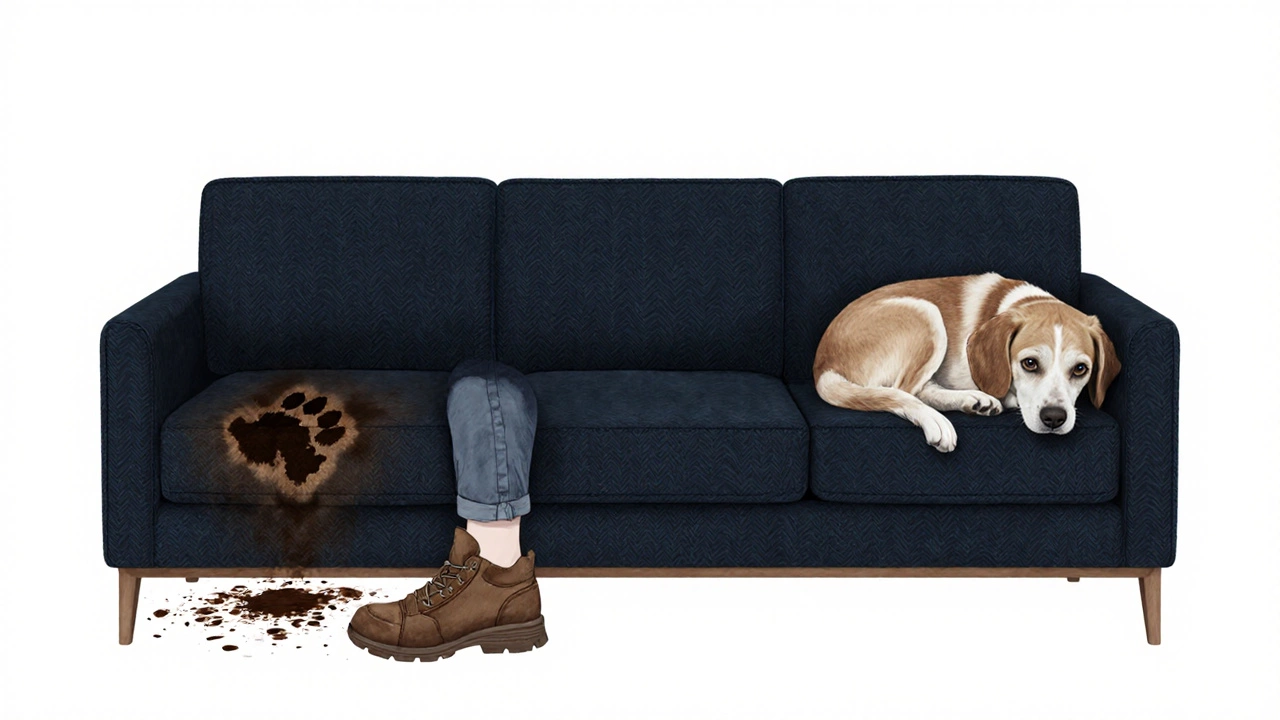
Fabric Matters More Than You Think
Color is only half the battle. The fabric determines how dirt behaves. A dark velvet sofa might look amazing, but if it’s made of natural silk velvet, it’ll trap dust and be impossible to clean. You need something engineered for real life.
Here’s what to look for in a dirt-resistant fabric:
- Stain resistance: Look for fabrics labeled “stain-resistant” or “easy clean.” These are treated with a protective coating that repels liquids.
- Low pile: Short, dense fibers don’t hold onto debris. Long pile traps everything.
- Machine-washable covers: Removable, washable slipcovers are a game-changer. Brands like IKEA, Article, and Burrow offer these in dark, durable options.
- Odor resistance: Some fabrics, like Crypton, are treated to stop bacteria and pet odors from sticking.
Don’t be fooled by “premium” fabrics that sound luxurious but aren’t practical. Wool blends, linen, and cotton in dark colors look great-but they stain easily. Save those for guest rooms.
Real-Life Scenarios: What Works in Actual Homes
Let’s look at what’s working in real homes-not just showrooms.
Case 1: The Dog Owner
Sarah, a single mom in Footscray, has two golden retrievers and a toddler. Her sofa? A deep charcoal bouclé from Burrow. She wipes it down weekly with a microfiber cloth. The dogs shed constantly, but the texture hides it. She says, “I haven’t cleaned it with soap in six months. It just looks like it’s supposed to look.”
Case 2: The Coffee Drinker
Mark, a freelance designer in Carlton, spills coffee daily. He chose a dark brown leather sofa with a matte finish. He wipes spills immediately with a damp cloth. No stains. No smell. No fuss.
Case 3: The Party Host
Lena throws monthly dinner parties. Her sofa? A navy performance fabric with a subtle herringbone pattern. Guests track in dirt, kids knock over juice, and yet it still looks fresh. “I don’t stress about it anymore,” she says. “It just survives.”
What NOT to Do
Don’t fall for these traps:
- White or beige sofas: Even if they’re labeled “stain-resistant,” they’re a time bomb. Dirt shows faster than you can say “oops.”
- Light gray: It’s the new white. A light gray sofa is a dirt billboard. One muddy paw and you’re staring at a crime scene.
- Shiny fabrics: Satin, polyester, or vinyl in any color will reflect every speck of dust. They look clean until you turn on the lights.
- Overlooking the frame: A great fabric won’t help if the sofa’s frame is sagging or the cushions are flat. Dirt hides better on a sofa that still looks good.
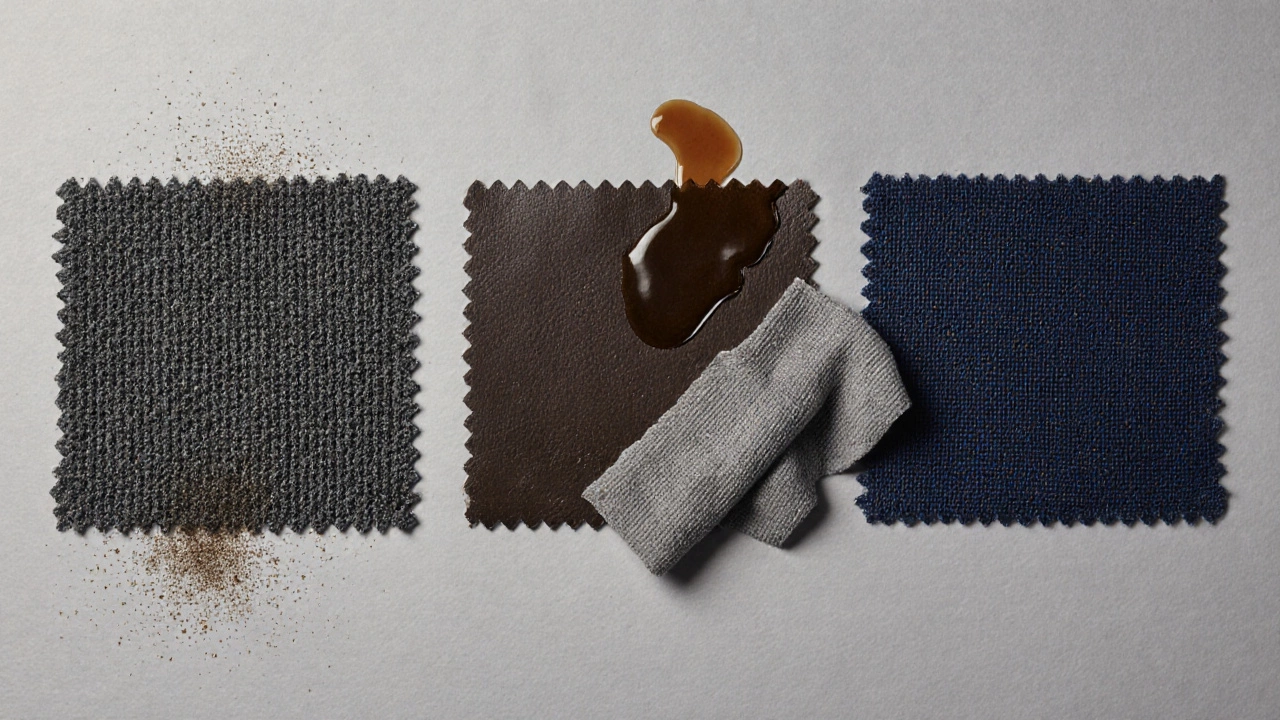
Final Rule: Choose Based on Your Life, Not Instagram
The most beautiful sofa in the world is useless if you’re constantly cleaning it. Don’t pick a sofa because it looks like a magazine spread. Pick one because it fits your life.
Ask yourself:
- Do pets sleep on it?
- Do kids eat on it?
- Do people come in with muddy shoes?
- Do you drink coffee or wine while watching TV?
If you answered yes to any of those, go dark. Go textured. Go performance fabric. Skip the trends. Your future self will thank you.
And if you’re still unsure? Test it. Bring home a fabric swatch. Rub it with dirt from your shoes. Spill a little coffee. Let it sit for a day. Then wipe it. If it looks clean after that, it’s your winner.
Frequently Asked Questions
Is a black sofa too dark for a small room?
Not if you balance it right. A black sofa in a small room can feel cozy, not claustrophobic, as long as you pair it with light walls, a bright rug, and plenty of lighting. Use mirrors to reflect light and keep the space feeling open. Dark furniture adds depth, not heaviness.
Can I clean a dark sofa without damaging the fabric?
Yes, but always check the care label first. For most performance fabrics, a damp cloth and mild soap work fine. For velvet or bouclé, use a soft brush to lift debris. Never use bleach or harsh chemicals. For deep cleaning, hire a professional who specializes in upholstery-most manufacturers recommend it once a year.
Are performance fabrics expensive?
They cost more upfront-usually $200-$500 more than standard fabric-but they last 2-3 times longer. In homes with pets or kids, you’ll save money on cleaning, replacements, and steamers. Think of it as insurance against constant stress.
What’s the best dark color for hiding pet hair?
Charcoal is the top pick. It’s dark enough to hide most hair but not so black that it looks like a void. Navy works well too, especially with lighter-colored pets. Avoid pure black if your pet sheds white or light-colored fur-it can look like lint.
Should I get a sofa with removable covers?
Absolutely-if you have kids, pets, or messy guests. Removable covers let you wash the fabric regularly without needing a professional. Look for zippers that are sturdy and hidden, and make sure the cover fits snugly so it doesn’t sag or bunch.
Next Steps
Start by collecting fabric swatches from three different sofas in dark tones. Test them with real dirt, pet hair, and a drop of coffee. Let them sit overnight. Then wipe them clean. The one that looks the best after that test? That’s your sofa.
Don’t rush the decision. A sofa lasts 10-15 years. Choosing the right color and fabric saves you hundreds in cleaning costs and years of frustration. Your living room should be a place to relax-not a cleaning project.
